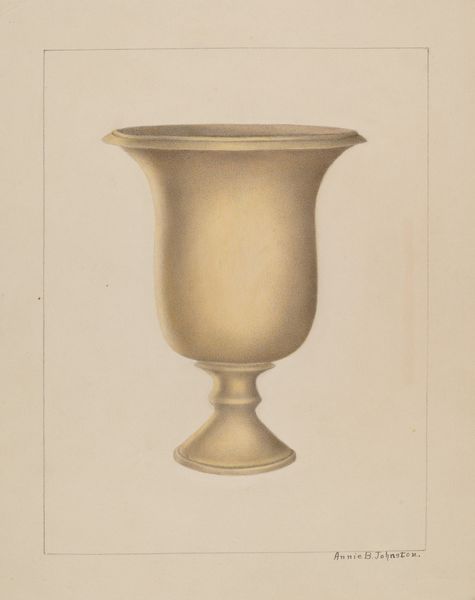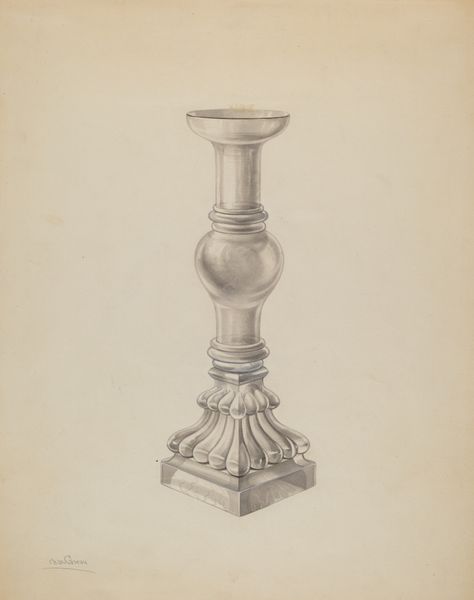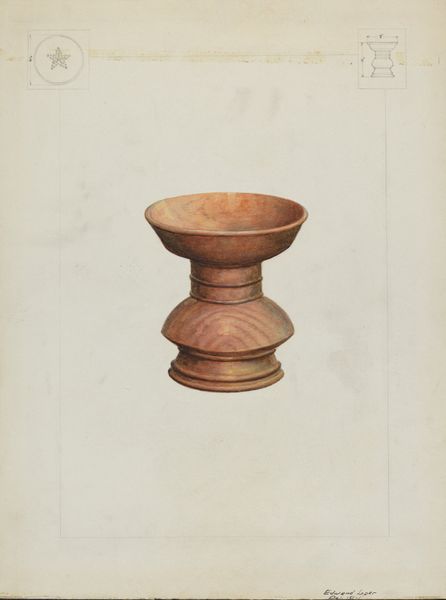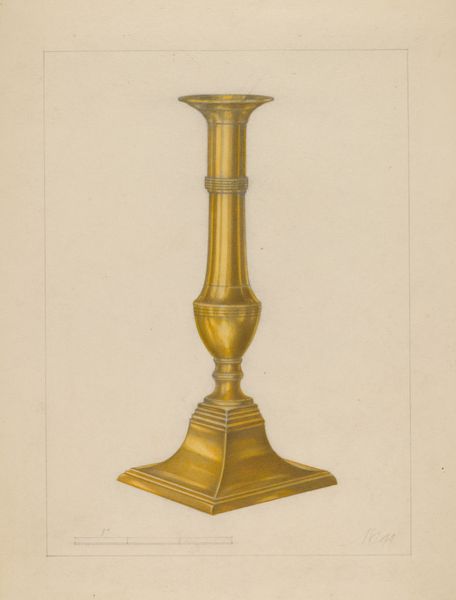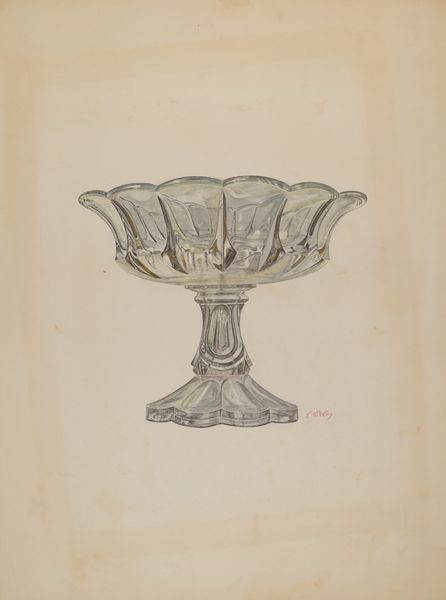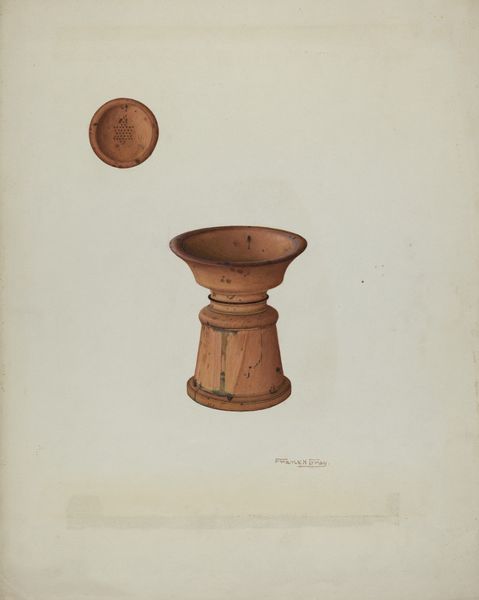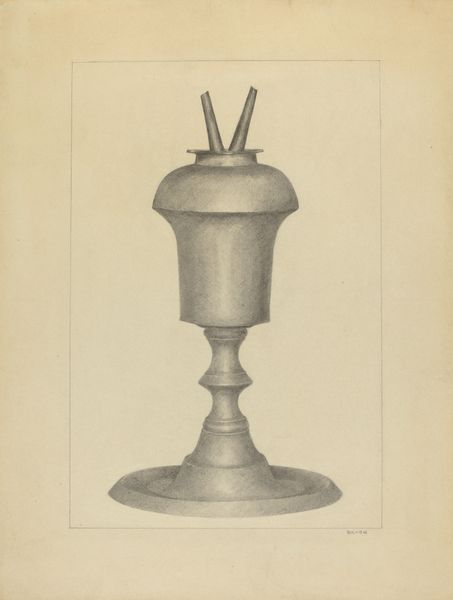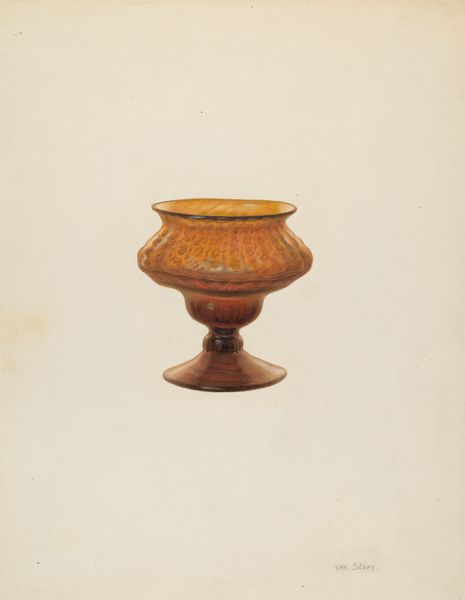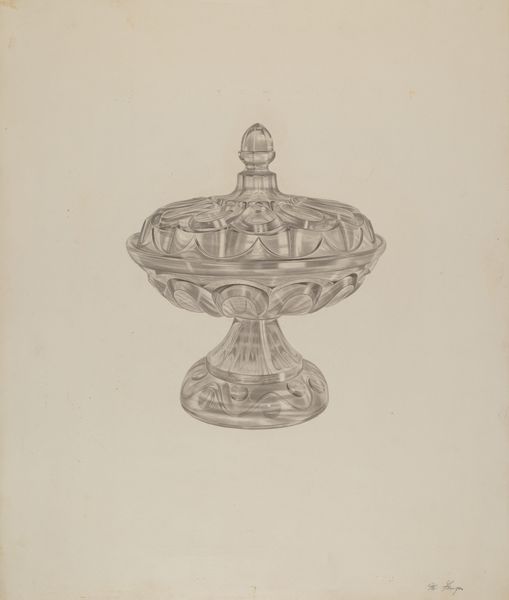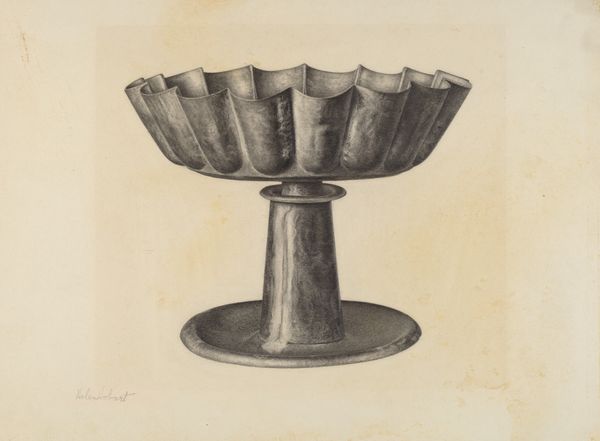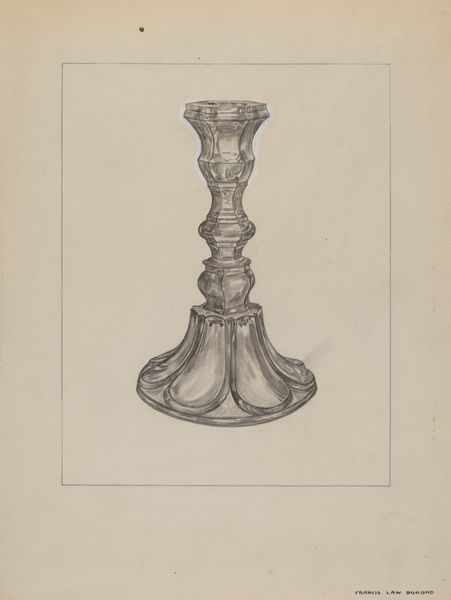
drawing, watercolor
#
drawing
#
pencil sketch
#
watercolor
#
watercolour illustration
#
watercolor
Dimensions: overall: 27.9 x 22.8 cm (11 x 9 in.) Original IAD Object: 13 1/2" High 9" Dia.
Copyright: National Gallery of Art: CC0 1.0
Curator: Here we have "Pottery Vase," a watercolor and pencil sketch from around 1938 by Annie B. Johnston. Editor: Oh, it's beautiful! Very simple, but there's something so comforting about its warm tones. It feels…stately, somehow. Like a prop from an old play. Curator: Absolutely, and it resonates deeply with the era. Think of the Great Depression; the push for idealized, classicized forms in art often served as a counterpoint to the socioeconomic anxieties of the time. An escape, perhaps. Editor: I get that. I’m thinking it’s that slightly faded golden color; it evokes this sort of idealized past— a yearning, maybe even. Though, is it just me, or is there a tiny hint of sadness too? Like it's seen better days. Curator: It’s perceptive of you to pick that up! There’s an underlying current of melancholy that perhaps is Johnston's way to critique those escapist desires. The form of the vase is rigidly classical, yet the medium, watercolour and pencil, creates an unexpected sense of fragility and fleetingness. Editor: Right, watercolour always has that feel. Almost dreamlike, a memory rather than reality. It also has that sketch-like feel; not too polished or overworked, which, in a way, is the best way to approach history too. Curator: Precisely, it avoids complete reverence. Johnston seems to want us to grapple with the weight of classical ideals. The fluted design, the urn shape... all rooted in patriarchal notions of power, order, and empire. Yet, it’s rendered so gently, as though seen through a veil. Editor: And, speaking from a painter's perspective, rendering that in watercolor is devilishly hard, so bravo Annie! It invites a contemporary interpretation that transcends simple, aesthetic pleasure. I have a feeling that in my home I will have plants trailing down its fluted shape. Curator: So, as we look at this Pottery Vase, remember that beneath its apparent beauty lies a call to question idealized views of history. The classical style and choice of the subject becomes another tool for modern dialogues on race and gender. Editor: Absolutely, and from a personal viewpoint it made me dream to have one in my terrace. Timeless.
Comments
No comments
Be the first to comment and join the conversation on the ultimate creative platform.
